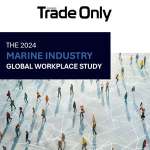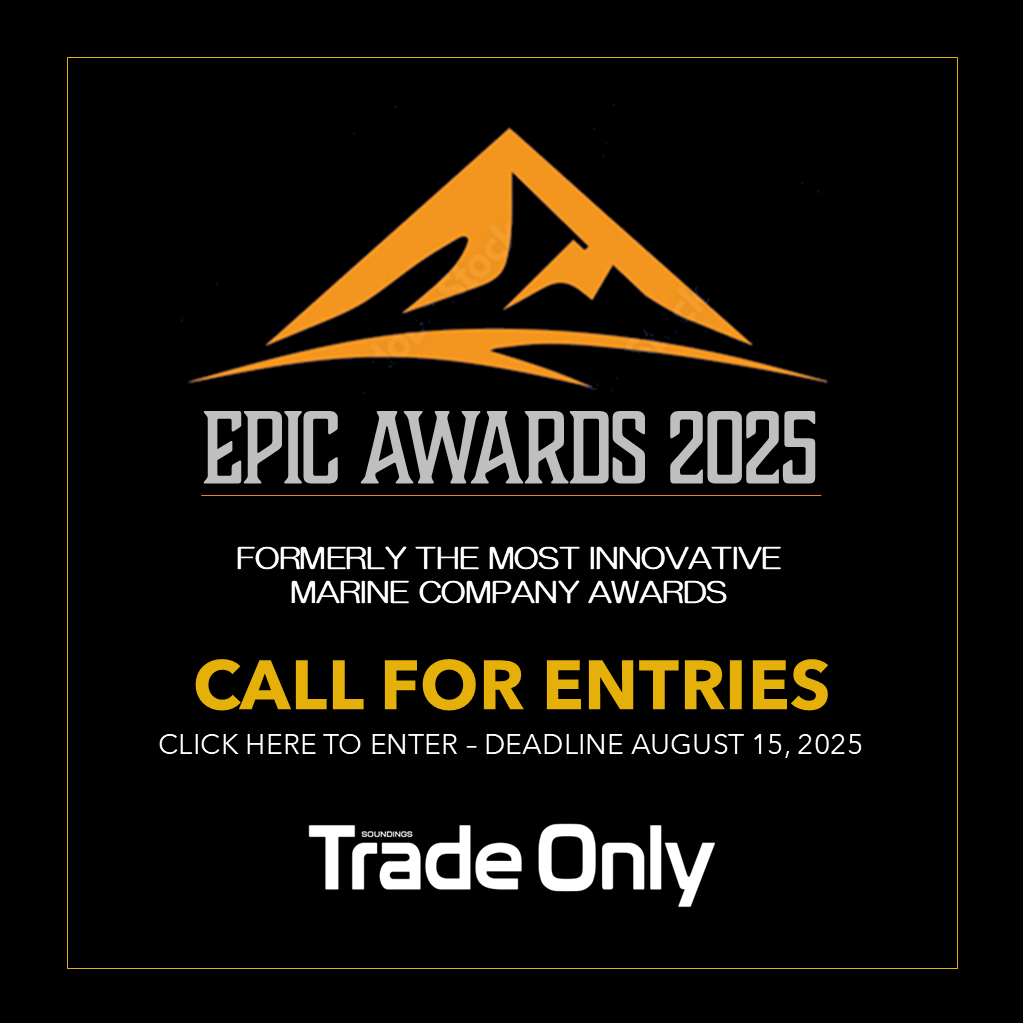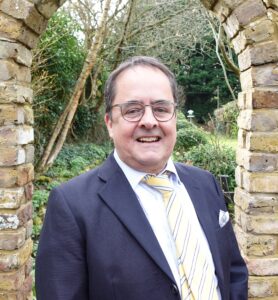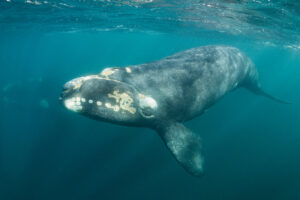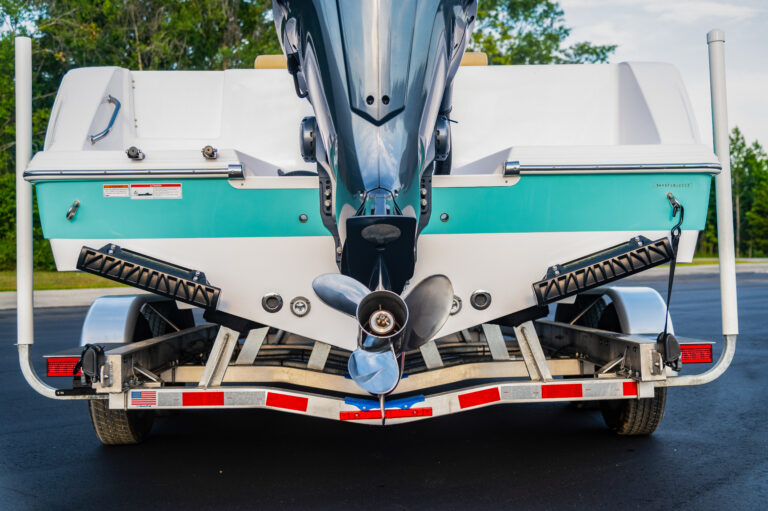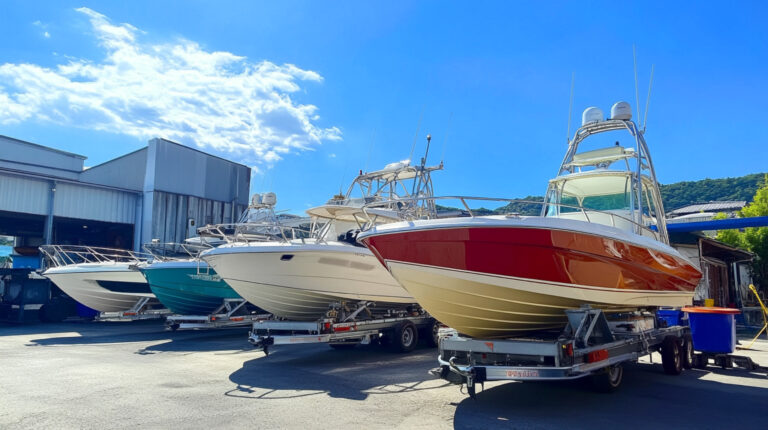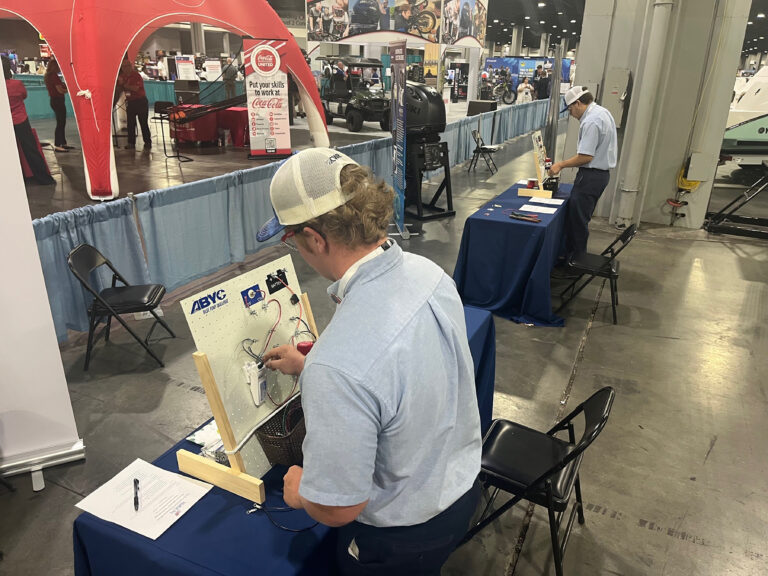The global marine industry is more focused on sustainability than ever. There are worldwide plans by marine manufacturers of all kinds to reduce landfill waste, use renewable energies, recycle manufacturing materials, encourage the use of sustainable fuels, reduce the collective carbon footprint and much more.
Leading these sustainability efforts for marine manufacturing giant Brunswick Corp. is Jennifer Koenig, who joined the company as its first chief sustainability officer three years ago after posts in state government, and in companies dealing in petroleum, pharmaceuticals, medical devices and medical waste disposal.
A proud Chicago, Ill., resident, Koenig spoke with Soundings Trade Only in late May about the company’s 2024 Sustainability Report (brunswick.com/overview/corporate-responsibility/sustainability-reports) and how Brunswick is further implementing green initiatives across its manufacturing facilities.
This interview has been lightly edited for clarity and length.
Tell us about your personal and professional backgrounds.
I was born in Maryland, but my family moved around a lot growing up. My parents were in the newspaper business. We spent the most time in the Delaware area. I went to University of Delaware for undergrad, and when I got out, I went to work for the state of Delaware, at the Delaware Economic Development Office. I worked there for several years. Next, I went on to business school at the University of Pennsylvania and eventually settled in Chicago, where I live now.
Professionally, I’ve been fortunate to have had opportunities that span across several different industries, including oil and gas, medical devices and waste management services. I worked for Amoco Oil here in Chicago, which is now BP. Then I went to work in healthcare for Monsanto’s pharmaceutical division. I also worked for the health-care company Baxter International, and then at some point I moved to Stericycle, which is a medical waste company.
My calling for sustainability started about eight years ago when I was the head of investor relations at my previous employer. At the time, the company did not have a sustainability function, so I raised my hand to take on that role in my spare time and published the company’s first global sustainability report.
One thing led to another, and I became the first head of sustainability at Brunswick three years ago. It’s been a wonderful experience. I love the culture at Brunswick. I love the people here. I feel like there’s great leadership.
Was it a ground-up effort to establish Brunswick’s sustainability goals, or were programs in place?
Mercury Marine, a Brunswick division, has a long history of sustainability. Mercury issued its first sustainability report in 2011 and set multiyear goals to reduce energy and water consumption.
Additionally, other businesses within Brunswick had their individual initiatives or goals, but there was not a “Brunswick approach” to sustainability. The early goal was to create such an approach and establish companywide goals while respecting the variations and unique operations across our businesses.
What were the easiest sustainability goals to implement?
While many of our goals haven’t been easy, especially for a company as diverse and global as Brunswick, we have made significant progress in aligning, educating, organizing and motivating numerous team members who play a role in attaining our sustainability goals. For us, the focus on creating value from sustainability efforts was, and remains, key to gaining commitment. I feel fortunate that there are many people across Brunswick who believe in continuous improvement and operating sustainably.
And the most difficult?
The most challenging environmental sustainability goal, not only for Brunswick, but the recreational marine industry overall, is reducing carbon emissions from the use of marine engines, or what is also known as Scope 3 Category 11 Use of Sold Products emissions.
Although the recreational marine industry is a relatively small carbon emitter, accounting for approximately 0.7% of U.S. emissions, the industry continues to evaluate options to reduce its footprint. Our industry has its own unique challenges for decarbonization that are tougher to tackle than those for road vehicles, including the energy required to travel on water, the wide range of marine vessels, and the long average lifespan of boats and engines. Significant advancement in alternative technologies such as battery storage or mass distribution of affordable, sustainable drop-in fuels will be required to make meaningful impact on emissions from use of marine engines.
Do you ever have to make a hard pitch to company execs about why sustainability ideas are important?
The culture is such that investing in capabilities to report on sustainability has become a hot topic. It’s more so in Europe, but there are global requirements to include sustainability reporting as part of financial reporting. Making the investments in tools to ensure you’re doing that accurately, and that you’ve got transparency that it can be audited, that has been the harder pitch.
It’s mainly because you’re doing it as a compliance matter, not because this sustainability initiative creates value for the company. So I think that’s been one of the harder challenges. But we have, as I mentioned, pursued a philosophy that sustainability needs to create value. Most of the actual initiatives that are related to impact are value-creating. They’re not tough decisions.
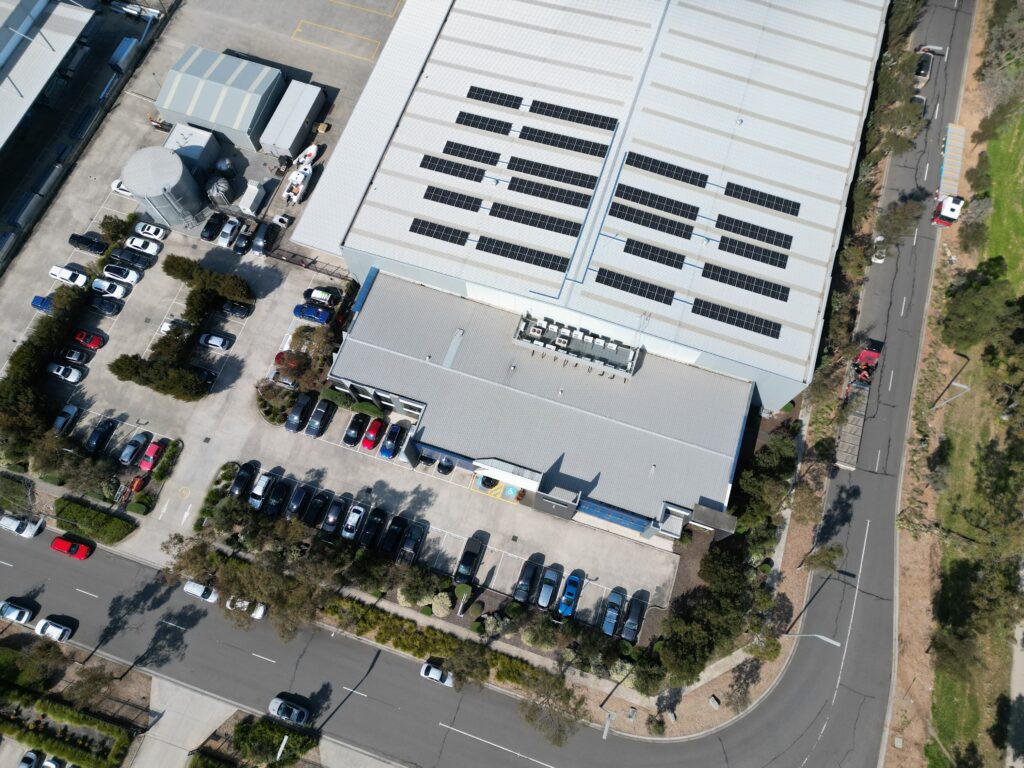
What goes into producing a sustainability report?
Brunswick has two full-time dedicated sustainability people: me and a director of sustainable engineering programs who works a lot with our product and operations teams to incorporate sustainability initiatives into product development or plant operations.
But we’re very fortunate that we have many, many, many people who spend a little bit of time on sustainability. When you think about the effort, it includes people in plant operations or finance who provide invoices on a regular basis. That way we can track electric and natural gas use.
We’ve also got people who help us tell the stories. They share information with us on changes that we’re making in materials so we can talk about lower carbon footprint. When we look at changing materials we use, there are people who are responsible for evaluating them, like asking, “Does this new material meet the quality requirements and the performance specifications that we have?”
It requires lots of people across the organization to believe in what we’re trying. It’s also critical that we believe it is part of our culture, and we’re trying to continue to embed it further in that culture. It’s just part of what people do in their jobs, and of course, some more than others.
Brunswick’s goal is a 30% reduction in Scope 1 and Scope 2 emissions by the end of this year. How is that going?
As of year-end 2024, Brunswick’s Scope 1 and Scope 2 carbon emissions were down 17% compared to 2022, our baseline year. While some of that reduction is linked to lower production volumes across the industry, Brunswick has maintained concerted efforts to reduce energy consumption at the facility level through adding more energy-efficient technology, shutting down idle equipment, lighting upgrades and sensors, air compressor maintenance, and even some on-site solar panel installations.
Another goal is getting 60% of the company’s electricity consumption from renewable sources by the end of this year.
Are you on course to meet that goal?
Brunswick’s nine facilities with on-site solar arrays generated about 1.5 million kilowatts of electricity, which help to support local electric grids. The company’s more significant renewable energy impact will come from our virtual power purchase agreements with energy developers.
Several years ago, Brunswick entered into two long-term agreements to support community solar fields, one in Fond du Lac County, Wisc., and the second in Swisher County, Tex. Both solar projects are now operational, and the renewable energy certificates from these should enable Brunswick to attain its 60% renewable energy goal by year end and offset Scope 2 carbon emissions to reach the 30% emissions reduction goal.
What does Brunswick’s overall carbon footprint look like, and what is the company doing to reduce it?
During 2024, Brunswick’s combined Scope 1 and Scope 2 carbon footprint was 162 kilotons of carbon dioxide equivalent, down 12% from the prior year. Purchased electricity makes up the largest share of those emissions, followed by purchases of natural gas. Brunswick’s Scope 3 emissions — indirect emissions from the upstream and downstream value chain — were approximately 2,838 kilotons of carbon dioxide equivalent. Use of sold products accounted for about 79% of those emissions, which reflects a full lifetime of emissions for marine engines produced during 2024. Raw materials (also called purchased goods and services) accounted for an additional 16% of Scope 3 emissions.
Brunswick has made numerous efforts to reduce our carbon footprint, including renewable energy projects and increased use of recycled content. The aluminum used in Mercury’s smelting operations in Fond du Lac, Wisc., is 100% recycled content, which has a much lower carbon footprint than virgin aluminum.
We’ve been working to increase recycled aluminum content in other operations across Mercury and across the boat manufacturing. During 2024, increased recycled content in Brunswick’s Boat Group reduced emissions by approximately 8 kilotons. We also seek opportunities to make our engines and boats more fuel efficient. Navan’s stepped hull, Lenco trim tabs and Mercury’s closed-loop fuel-controlled system are a few examples of product innovations supporting sustainability.
What about clean air and water? What is the company doing to improve both?
Brunswick has formal programs for environmental compliance management, which include air emissions and water management at several of our larger facilities.
These programs include identifying environmental hazards, routine monitoring, auditing, and maintaining standard operating procedures and routine employee training.
With air emissions, the company seeks to identify and evaluate alternative materials and processes to reduce emissions while maintaining the quality and durability of our products. As for water conservation, several of our facilities utilize water recirculation processes that not only minimize water consumption but also reduce wastewater and effluents.
How is Brunswick reducing waste to landfill?
The company has set a goal for 40 of our facilities to attain our internal standard of zero waste to landfill, which means diverting 90% of operational waste. As of year-end 2024, 27 facilities had attained this status, representing Mercury Marine, the Boat Group and Navico Group businesses in multiple countries. Attaining this level of waste diversion requires significant commitment and effort by a facility to establish measurement and monitoring processes, set up systems for segregating waste streams, seek new vendors for specific waste like cardboard or wood pallets, and identify waste-to-energy alternatives for wastes that are difficult to recycle.
How difficult is it to add recycling to complex manufacturing processes, such as building outboard engines?
Recycling operational waste is challenging because you must have an outlet for each waste category. Some plastics are recyclable, and so are certain metals, but then you also need a recycler near your physical location to make it economically viable. If you need to ship plastics a thousand miles, you’re going to end up paying more to ship it than you will for the recycling value.
Recycling is generally very location-specific. We have flexibility to pick sites where we have materials that we know we can get recycled. And at our other facilities, we’re still focused on how we can just increase the percentage of recycling that we have in those facilities.
Is it easier to implement sustainability initiatives in some countries than in others?
In a way, yes. Mexico is a country that is water-constrained in many regions. As a result, the projects that we’ve done in Mexico focus more on water than they might in other countries. Also, the solar market is still developing in Mexico, so it is a little more challenging for solar installations there.
Europe is interested in being the first carbon-neutral continent, so they’re very focused on greenhouse gas emissions. That’s their prime initiative. It’s not necessarily that there are regulatory things holding up initiatives in different places; it’s that different factors affect how each country can participate in sustainability.
What is your biggest goal, sustainability-wise, for this year?
The full-year commercialization of Brunswick’s renewable energy partnerships will have the most impact on our energy and carbon emissions profile. We are working on some initiatives to engage more of our manufacturing facilities in energy conservation. Furthering on-site solar and additional energy efficiency upgrades is part of that. These efforts will not only support our goals to reduce the company’s carbon footprint, but they help reduce operating costs.
Many people think being a sustainability officer only deals with “green” initiatives, but you also work with employees, correct?
Indeed, the social side of sustainability has significantly evolved over the past 25 years. Today, corporate sustainability encompasses employee engagement, safety, philanthropy and ethics alongside the traditional
environmental topics such as air, water and waste. Corporate sustainability is about creating business value through strategies and methods that align with broader societal goals, such as minimizing environmental impact, investing in our employees, and supporting our communities.
What is the company doing to attract and retain the best employees?
Maintaining Brunswick’s position as an employer of choice is a driving force behind many of our employee programs and initiatives, ensuring we maintain our exceptional culture that attracts and retains top talent.
Through activities and touchpoints like our annual employee engagement survey and listening sessions, we are committed to creating an environment where employees feel heard and act on suggestions to make work easier. We are proud to provide competitive compensation and benefits packages as well as meaningful learning and talent development programs aligned with our values. One benefit we are particularly proud of is our boat rental reimbursement program, which encourages everyone to enjoy our products and enjoy the restorative nature of the water.
What initiatives is the company organizing with employees in communities near manufacturing facilities?
Brunswick’s commitment to local communities is one of the things that makes me proud to be a Brunswick employee. Groups of employees at our manufacturing facilities, distribution warehouses and even Freedom Boat Club locations are very active in their local communities.
Some of our efforts include partnering with local high schools and trade schools to encourage marine careers, supporting back-to-school supply drives, participating in food drives or meal-packing events, as well as rallying around communities during natural disasters, like the floods in Spain and hurricanes Helene and Milton in the U.S. last fall. Additionally, many of our sites also supported local conservation efforts through World Cleanup Day, which included 16 different cleanup events involving 450 employees.
What else do you do that people might not realize?
Monitoring the regulatory environment has become an important part of the sustainability function over the past several years. Many countries have introduced — and subsequently revised — new requirements for sustainability reporting.
Europe has been the most ambitious in introducing such regulations, but other countries have also introduced or enacted reporting requirements, including Brazil, Australia, Mexico, New Zealand and others. Even the state of California has enacted reporting requirements for certain companies that operate within their borders. For a global company like Brunswick, identifying and interpreting the requirements on a country-by-country basis has become a new element of regulatory compliance to address.
Is there anything you’d like to add?
One of my personal highlights from 2024 was the introduction of Brunswick’s Sustainability Week. This was an effort to engage more of our employees in sustainability action, either at work or in their personal lives. Each day during Sustainability Week, we highlighted a key environmental theme through a daily blog and webinar. This content featured internal and external perspectives and shared insights on the importance of the topic, highlighted Brunswick’s efforts, and provided suggestions on how employees could take action. I was pleased to see strong engagement across our employee population on this initiative.

